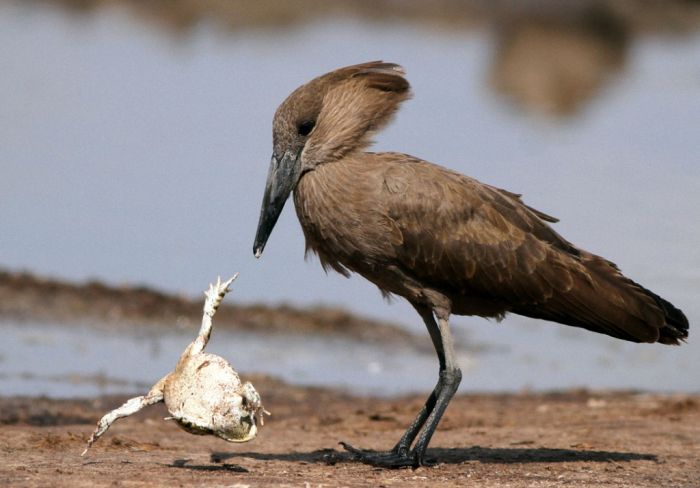|
|
Bird With A Dancing Frog
|
Natural history
The life cycle of frogs, like that of other amphibians, consists of four main stages: egg, tadpole, metamorphosis and adult. The reliance of frogs on an aquatic environment for the egg and tadpole stages gives rise to a variety of breeding behaviours that include the well-known mating calls used by the males of most species to attract females to the bodies of water that they have chosen for breeding. Some frogs also look after their eggs—and in some cases even the tadpoles—for some time after laying.
• Life cycle
The life cycle of a frog starts with an egg. A female generally lays gelatinous egg masses containing thousands of eggs, in water. Each anuran species lays eggs in a distinctive, identifiable manner. An example are the long strings of eggs laid by the common American toad. The eggs are highly vulnerable to predation, so frogs have evolved many techniques to ensure the survival of the next generation. In colder areas the embryo is black to absorb more heat from the sun, which speeds up the development. Most commonly, this involves synchronous reproduction. Many individuals will breed at the same time, overwhelming the actions of predators; the majority of the offspring will still die due to predation, but there is a greater chance some will survive. Another way in which some species avoid the predators and pathogens eggs are exposed to in ponds is to lay eggs on leaves above the pond, with a gelatinous coating designed to retain moisture. In these species the tadpoles drop into the water upon hatching. The eggs of some species laid out of water can detect vibrations of nearby predatory wasps or snakes, and will hatch early to avoid being eaten. Some species, such as the Cane Toad (Bufo marinus), lay poisonous eggs to minimise predation. While the length of the egg stage depends on the species and environmental conditions, aquatic eggs generally hatch within one week. Other species go through their whole larval phase inside the eggs or the mother, or they have direct development. Unlike salamanders and newts, frogs and toads never become sexually mature while still in their larval stage.
|
|









